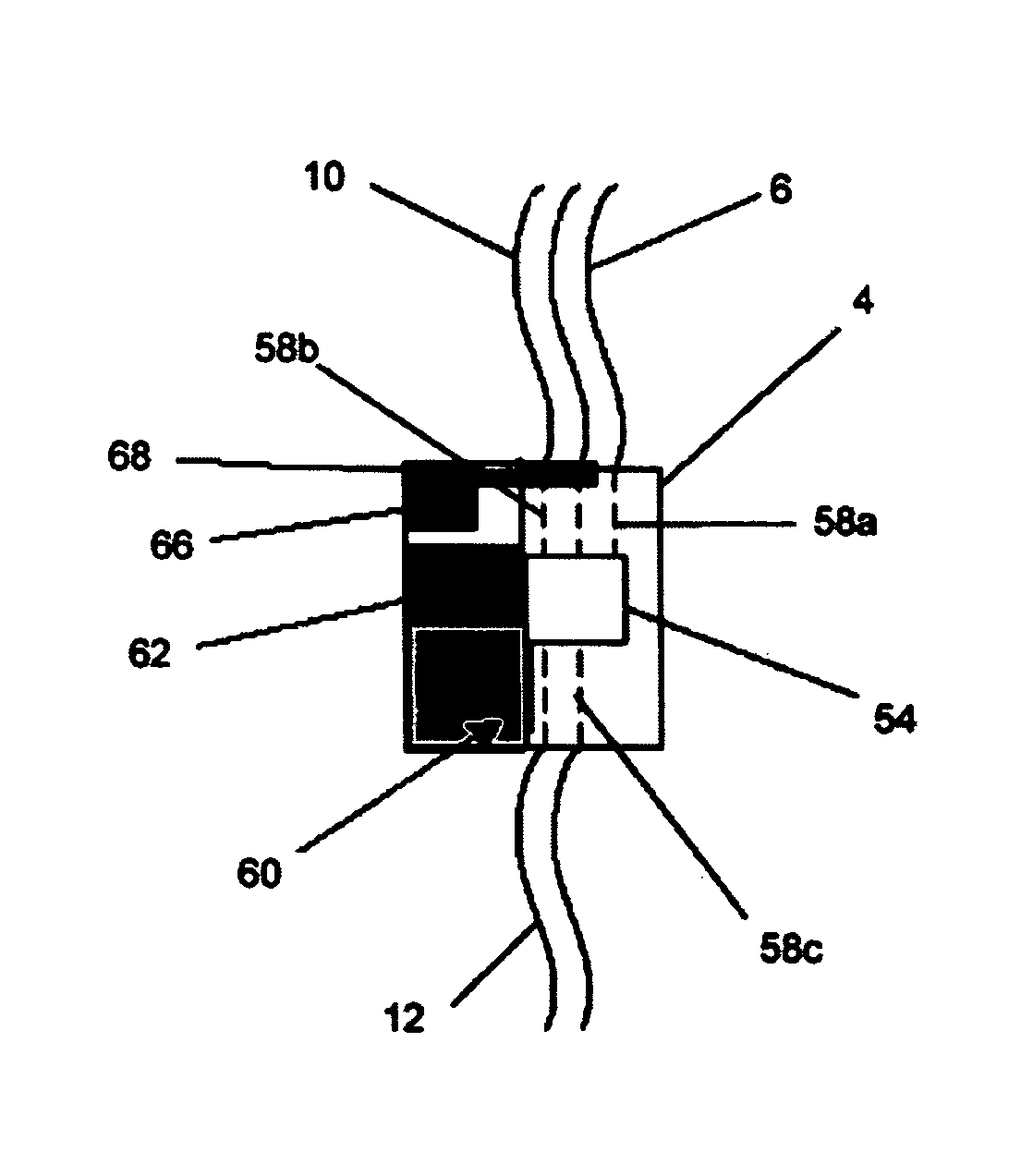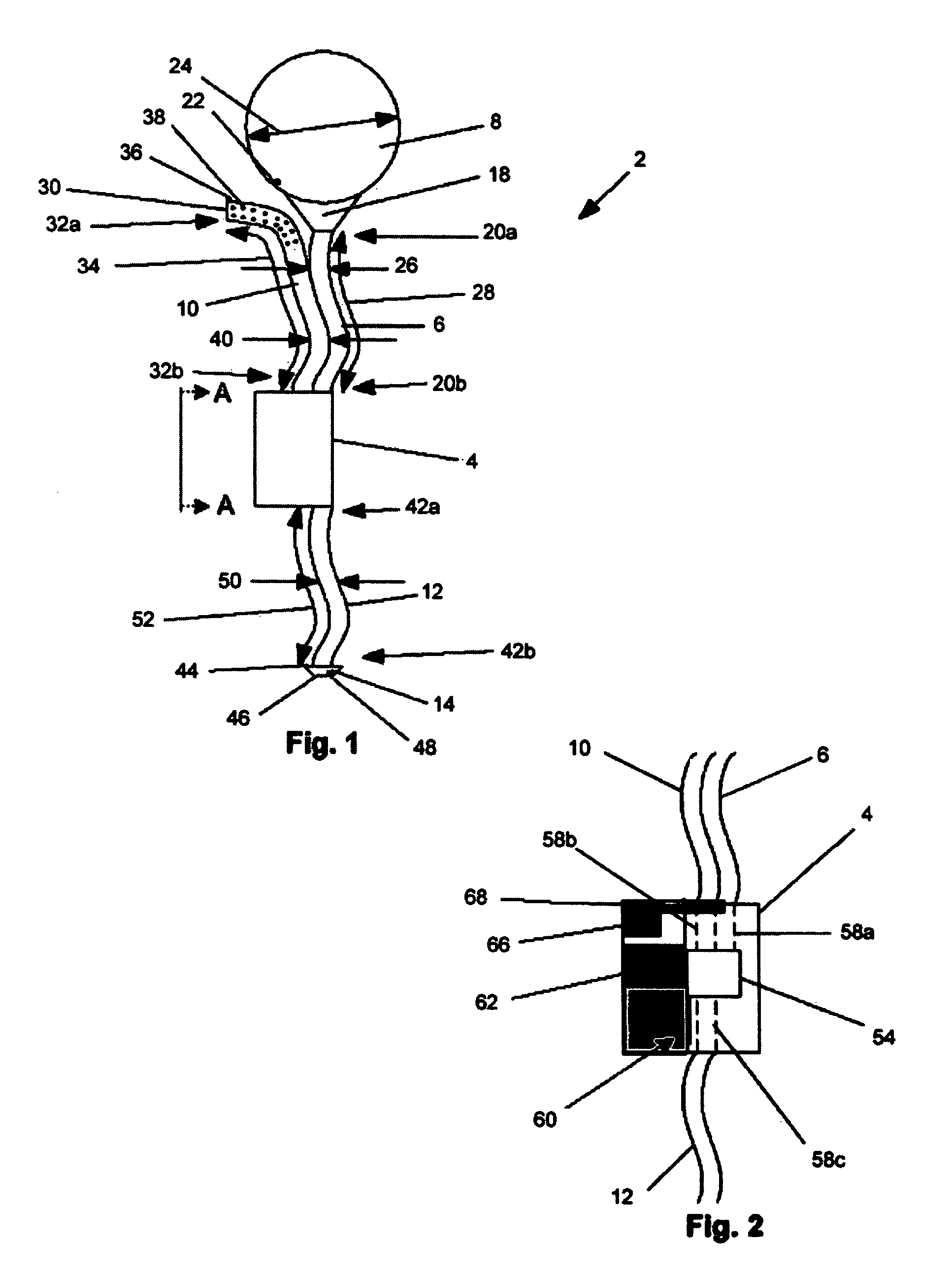Dialysis implant and methods of use
a technology of implanted devices and dialysis, which is applied in the field of peritoneal dialysis, can solve the problems of not being able to incorporate safeguards, fail to incorporate control mechanisms required for effective dialysis without, and increase the number of painful punctures needed to introduce the dialysis solution, so as to prevent excessive bladder pressure, low or high peritoneal pressure, and increase the applied strength of magnetic forces
- Summary
- Abstract
- Description
- Claims
- Application Information
AI Technical Summary
Benefits of technology
Problems solved by technology
Method used
Image
Examples
Embodiment Construction
[0049]FIG. 1 illustrates an implantable dialysis device 2. The implantable dialysis device 2 can have a distributor 4. The distributor 4 can be configured to receive and distribute a dialysate and / or any other fluid or fluids, for example a solution of therapeutic and or diagnostic agents. The dialysate can be received by the distributor 4 and initially distributed through a reservoir conduit 6 to a reservoir 8. At a later time, the distributor 4 can withdraw the dialysate from the reservoir 8 and distribute the dialysate through a discharge conduit 10 to a peritoneal cavity (shown infra). At a later time, the distributor 4 can withdraw the dialysate and other waste fluids and solids from the peritoneal cavity through the discharge conduit 10. The distributor 4 can then distribute the withdrawn dialysate and waste fluids and solids through the exit conduit 12 and out an exit 14 to a bladder (shown infra).
[0050]The distributor 4 can be attached to a reservoir conduit 6. The reservoir...
PUM
 Login to View More
Login to View More Abstract
Description
Claims
Application Information
 Login to View More
Login to View More - R&D
- Intellectual Property
- Life Sciences
- Materials
- Tech Scout
- Unparalleled Data Quality
- Higher Quality Content
- 60% Fewer Hallucinations
Browse by: Latest US Patents, China's latest patents, Technical Efficacy Thesaurus, Application Domain, Technology Topic, Popular Technical Reports.
© 2025 PatSnap. All rights reserved.Legal|Privacy policy|Modern Slavery Act Transparency Statement|Sitemap|About US| Contact US: help@patsnap.com



